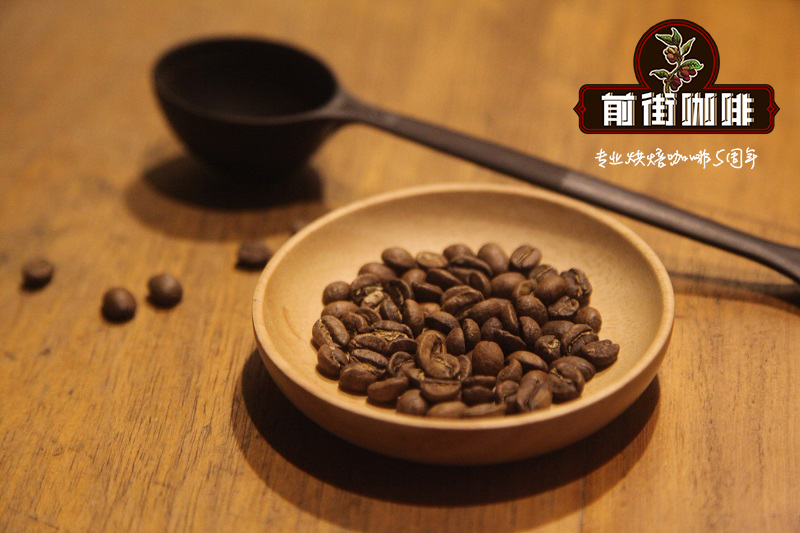How about Indian coffee beans? is Indian coffee good? I'm sure it doesn't taste like curry.

Professional coffee knowledge exchange more coffee bean information please follow the coffee workshop (Wechat official account cafe_style)
Qianjie-Indian Coffee introduction
In 1600 AD, St. Baba Bad planted the Mocha Seven Stars in his yard in Karnataka with several germinable coffee seeds in his pocket. At first, no one cared about the "extraterrestrials" in these gardens. Coffee saplings began to grow and spread for a long time. In the 18th century, due to British colonial rule and the demand for coffee, British entrepreneurs went to India to search for gold, and entrepreneurs successfully conquered the forests of southern India. At this point, India's commercial coffee began to expand cultivation, and developed rapidly.
Coffee features: Indian coffee has a mild taste, low acidity and excellent acidity, with a strong exotic flavor and strong aroma, full-bodied spice and a long finish. Known as the best "light" coffee in the world. Coffee growing areas in India have a variety of climatic conditions, which are suitable for growing different kinds of coffee. Some areas with high elevations are most suitable for planting Arabica species, while those with warm and humid conditions are most suitable for growing Robosta species. India places all its coffee under a well-defined two-layer mixed awning made up of evergreen legumes.
There are nearly 50 different types of shade trees in the coffee plantation. Shading trees prevent soil erosion on slopes; they enrich the soil by recovering nutrients from deeper levels, protect coffee trees from seasonal fluctuations in temperature, and act on a variety of plants and fauna. India's coffee plantations are also an essential spice world: intermittent cultivation of a wide variety of spices and fruit crops, such as pepper, cardamom, vanilla, oranges and bananas, grow next to coffee trees.
India is the only country that uses regional shade to grow coffee. Has been producing and exporting a variety of high-quality coffee, and steadily maintain a high-quality export life of more than 150 years.
India's monsoon coffee is most famous for "Monsoon Malaba" and "Monsoon Bassanicoli", especially for the latter. There are other countries that ferment raw beans in order to achieve a similar flavor of monsoon coffee, but they do not use monsoon to treat raw beans as India does. Monsoon coffee can be said to be one of the highlights of Indian coffee.
Although India is famous for its black tea production, it can be produced with the characteristics of monsoon coffee. Indian coffee should have great potential for development. After all, India's coffee industry was booming before the rust that devastated India's coffee production. Perhaps one day the Indian coffee industry can return to its former glory, looking forward to having more specialty coffee dedicated to the world, and looking forward to the wave of boutique coffee becoming more popular.
In short: Qianjie is a coffee research hall, happy to share the knowledge about coffee with you, we share unreservedly just to make more friends fall in love with coffee, and there will be three low-discount coffee activities every month. The reason is that Qianjie wants to make more friends drink the best coffee at the lowest price, which has been Qianjie's tenet for 6 years!
END
Important Notice :
前街咖啡 FrontStreet Coffee has moved to new addredd:
FrontStreet Coffee Address: 315,Donghua East Road,GuangZhou
Tel:020 38364473
- Prev

How about Indian coffee with sea flavor? What Indian coffee brands can be recommended?
Professional coffee knowledge exchange More coffee bean information Please pay attention to coffee workshop (Weixin Official Accounts cafe_style) Qianjie-Indian monsoon coffee introduction I believe most people have not heard of Indian coffee, indeed, Indian coffee is not very famous brand, more than half of the coffee is Robusta coffee, Arabica coffee production is very small, most coffee exports to Russia, Germany and Italy
- Next

How to brew Indian coffee without curry Indian coffee beans taste low-sour and mellow
Professional coffee knowledge exchange more coffee bean information please follow Coffee Workshop (Wechat official account cafe_style) Front Street-Coffee in India is hot all over India, most of it is a tropical monsoon climate, while the Thar Desert in western India has a tropical desert climate. There is an obvious monsoon in summer and no monsoon in winter. The climate of India is divided into rainy season (June to October) and
Related
- Beginners will see the "Coffee pull flower" guide!
- What is the difference between ice blog purified milk and ordinary milk coffee?
- Why is the Philippines the largest producer of crops in Liberia?
- For coffee extraction, should the fine powder be retained?
- How does extracted espresso fill pressed powder? How much strength does it take to press the powder?
- How to make jasmine cold extract coffee? Is the jasmine + latte good?
- Will this little toy really make the coffee taste better? How does Lily Drip affect coffee extraction?
- Will the action of slapping the filter cup also affect coffee extraction?
- What's the difference between powder-to-water ratio and powder-to-liquid ratio?
- What is the Ethiopian local species? What does it have to do with Heirloom native species?

